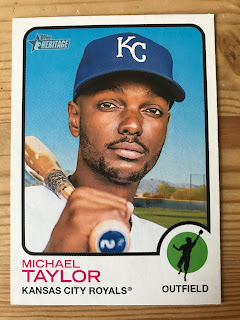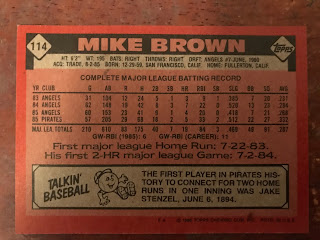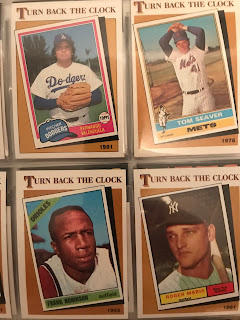THE QUEEN OF
DIAMONDS: EFFA MANLEY AND THE NEGRO
NATIONAL LEAGUE NEWARK EAGLES
Effa Manley was not the first woman to own a major league
baseball club. Helene Hathaway Robison
Britton was, inheriting the St. Louis Cardinals on the death of her uncle,
Stanley Robison, in 1911.
And Effa Manley was not the first woman to own a Negro League
baseball club, either. Olivia Taylor ran
the Indianapolis ABCs following the sudden death of her husband Charles Isham
Taylor in 1922.
But Effa Manley was more than a temporary caretaker. Co-owner for a dozen years with her husband
Abe of the Newark Eagles, Effa was a tireless and outspoken advocate for black
baseball in the 1930s and 1940s. Decades
later, when the time for voting finally came, it was she, not Abe, who was
elected to the Baseball Hall of Fame, the first and thus far only woman to earn
the honor.
Earn it, she did.
Universally acknowledged as he brains behind the Eagles, Effa handled
the business end of club operations including public relations, player
contracts and scheduling games. Abe
avoided the paperwork, concentrating on his greater skills as a scout and
player developer. It was a match made
in diamonds—literally. The two met at
Yankee Stadium during the World Series of 1932 and married the following
June.
Like many owners of Negro League clubs, Abe was a numbers
kingpin. He briefly owned the Camden NJ
Leafs baseball club before the bombing of his luxurious Rest-A-While nightclub
convinced him of the wisdom of a move to Harlem. Effa lived within walking distance of Yankee
Stadium and adored Babe Ruth. "I
used to go see all the Yankees games and hope he'd hit the ball out of the
park," she said.
In the fall of 1934, the Manleys were granted the Brooklyn
Eagles franchise of the Negro National League.
Two years later, owner Charles Tyler of the Newark Dodgers turned the
team over to the Manleys to cancel a $500 debt.
Abe and Effa combined the teams, keeping the Eagles name and moving
across the Hudson River to Newark.
Negro Leagues Legends, Card No. 148 (2020)
Emma was committed to social justice and civil rights. She organized the “Don’t Buy Where You Can’t
Work” Harlem jobs campaign, served as the treasurer of the New Jersey NAACP,
and hosted an anti-lynching campaign at Ruppert Stadium, home field of the
Eagles.
Abe might have preferred drinking and playing cards during
his off hours, but he had a sure eye for talent. He guided Larry Doby, Monte
Irvin and Don Newcombe to the major leagues.
Effa's tongue was as sharp as Abe's eye, and she never
hesitated to speak her mind to her all-male fellow owners.
Black baseball teams commonly rented out the stadiums of
white teams for big games. Sometimes,
the owners of the teams worked direct deals.
Cum Posey of the Homestead Grays, for instance, contracted directly with
Washington Senators owner Clark Griffith for the use of the self-named
stadium. Other times, a middleman
brokered the deal.
Eddie Gottleib, a white man better known for his role in
establishing the NBA, acted as the go-between Yankee Stadium and the black
teams. Gottlieb charged a 10% fee for
his services, and this led to angry words during the 1940 National Negro League
winter meeting. Owners Alex Pompey of
the New York Cubans and Jim Semler of the New York Black Yankees objected to
the fee. So did Abe and Effa
Manley. In his biography of Cum Posey,
James Overmyer quotes a description of the scene from the Chicago Defender:
“The race issue, something which has been kept out of the
league meetings before, was brought up by Mrs. Manley who declared, ‘the league
ought to be run for colored by colored…We are fighting for something bigger
than a little money!’”
The New York owners and the Manleys led an unsuccessful
revolt to replace the league officers and the hot words continued. According to
Overmyer, Effa insulted the current leaders as handkerchief heads, slang for
Uncle Toms. An incensed Posey accosted
Abe Manley in the hallway after the meeting, threatening to never come back if
Abe couldn’t keep his wife at home “where she belonged—in the kitchen.”
The catcalling continued over the winter, when Posey accused
Effa of “senseless chatter and baying at the moon,” and Effa insisting on
racial independence. “If we had the
money in the league that Has (sic) been put into the o-fays pockets, we would
be able to do a lot of things.”
The battle over the league leadership was never fully
resolved. Effa remained a vigorous
defender of the league, and even Jackie Robinson felt her bite. In 1948, Robinson criticized the league as a
disorganized operation with bad umpiring and owners involved in gambling
rackets. “Negro baseball,” Robinson
said, “needs a housecleaning from top to bottom.”
“I do not think it’s fair for a half-baked statement to come
from irresponsible members of our race and have it stand unchallenged,” Effa
retorted. “I think an apology is due the
race that nurtured him — yes, the team and league which developed him.”
The 1946 Newark Eagles, Postcard, Black Ball
Left to right, back row:
Monte Irvin, LF; Johnny Davis, LF\; Lennie Pearson, 1B; Len Hooker, P;
Max Manning, P; Cecil Cole, P; Rufus Lewis, P; Larry Doby, 2B.
Left to right, middle row: Leon Ruffin, C; Warren Peace,
P; Jim Wilkes, CF; Bobby “Cotton”
Williams, P; Bat Boy.
Left to right, front Row:
Benjamin “Billy” Felder, SS; Charles Parks, C; Clarence Israel, 3B;
Raleigh “Biz” Mackey, C; Bob Harvey, RF; Leon Day, P.
Despite Emma’s business sense and Abe’s roster building, the
Newark Eagles were largely a middle of the division ball club. Better campaigns often ended in second place
behind the perennially powerful Homestead Grays. But in 1946, the Eagles finally took league
honors, in the last season before integration began the destruction of the
Negro Leagues.
The Mad Dash home of Enos Slaughter in Game Seven carried
the St. Louis Cardinals past the Boston Red Sox on the white side of the
game. The black championship series also
went the distance, with the Newark Eagles taking on the last of the fearsome
Kansas City Monarch teams.
Each club was a powerhouse.
The Monarchs featured four future Hall of Famers—Willard
Brown and Buck O’Neill provided the punch for the Monarchs, and Satchel Paige
and Hilton Smith the pitching. The
Eagles also counted four future inductees—Manager Biz Mackey, pitcher Leon Day,
and soon-to-be major league stars Larry Doby and Monte Irvin.
Game One went to the Monarchs when Satchel Paige outdueled
Rufus Lewis in a relief battle at the Polo Grounds. Negro World Series games were often played on
neutral sites as well as the home fields of the competing teams.
The Eagles evened the series at Ruppert Stadium before the
series moved to Blues Stadium in Kansas City.
The Monarchs hammered the Eagles 15 to 5 in Game Three. Lewis redeemed his earlier loss in Game Four,
tossing an 8 to 1 gem.
Game Five was played at Comiskey Park, taken by the
Monarchs, 5 to 1.
The teams returned to Newark to close out the series. Monte Irvin homered twice for the Eagles in
Game Six to tie the set at three games apiece.
Rufus Lewis took the mound for the Eagles in Game Seven against Ford
Smith, taking the place of an AWOL Satchel Paige, off barnstorming with Bob
Feller. Newark batters only managed
three hits on the day, but they were enough, and the Eagles took the game, 3 to
2, to win their first and only championship.
“We could have beaten the Cardinals too,” Effa said.
But the writing was on the wall. The Eagles drew 120,000 fans in 1946. Competing for attendance with the Dodgers and
Jackie Robinson the following year, attendance plummeted by half. In 1948, the club drew only 35,000 fans, and
it was time to let go. The Manleys sold
the Eagles to a pair of Memphis businessmen, who moved the team to
Houston. After another move to New
Orleans, the team folded in 1951.
Hall of Fame Postcard, 2006
Effa Manley grew up as a black girl in Philadelphia and
Harlem and lived a black life. In her
later years, Effa, almost astoundingly, claimed to be white. She is quoted by one biographer:
“I’ve often wondered what it would be like associating with
white people ... now, many occasions in my life I’ve always gone and traveled
as white. I didn’t think about going visiting or going to any strange city or
hotel anything or, you know, I’ve always — which I am white. ... So I’m only
telling you that because I know that even you must have been thinking that all
this conversation, I’m always talking about the Negroes, and I guess you
figured, ‘What’s this white woman doing so concerned about the Negro?’ So
that’s what’s happened. I’ve just come up entirely in this Negro atmosphere.”
Some of the story is clear.
Effa was born in 1897. Her
mother, Bertha Ford, married an African-American man, Benjamin Brooks. Bertha later had extramarital relations with
her white employer, stockbroker John Marcus Bishop. This union produced Effa. Brooks sued Bishop for alienation of
affection, won $10,000, and divorced Bertha.
The question of Effa’s racial identity is blurred and
depends on her mother’s heritage. Some
historians flatly state that Effa’s mother was white. Other investigators claim Bertha herself was
of mixed background. Bertha is described
as black on census records in 1900 and 1910, but that does not seem reliable.
Bertha considered Effa white.
A niece said Effa “was white when she wanted to be and Black
when she wanted to be.”
Monte Irvin said, “When she got older it became more
apparent she was black; she got darker.
Any African American person can see the difference.”
The deep, rich earth of the game keeps its secrets. Her tombstone simply says, “She loved
baseball.”
--Russell Streur
Thanks for reading! Happy Collecting!


















































